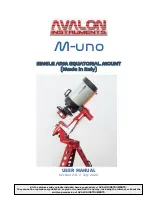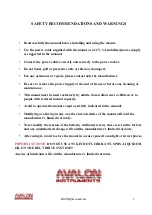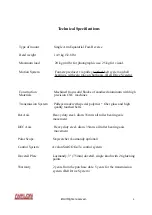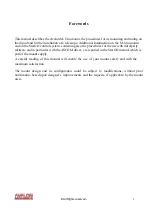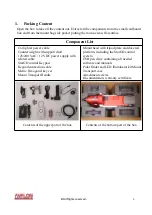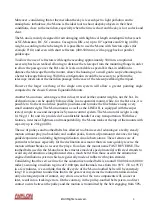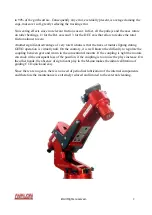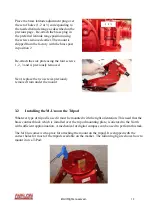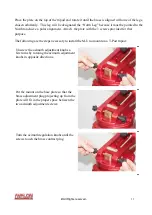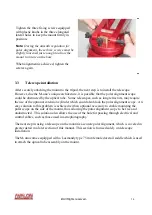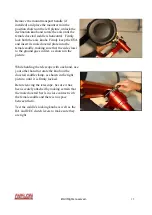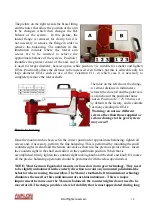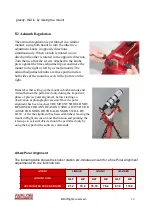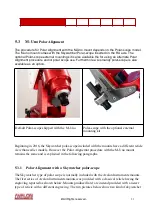
Moreover, considering that at the meridian the sky is less subject to light pollution and to
atmospheric turbulence, the M-uno is the ideal tool to shoot deepsky objects in their best
conditions, close to the meridian, especially when the time is short and the sky is not so dark and
clear.
The M-uno is mainly designed for astroimaging with high focal length catadioptric tubes (such
as SC-Maksutov, RC, SC cameras, Cassegrain, DK, etc) up to 10″ aperture and 20 kg (44 lb)
weight, according to the tube length. It is possible to use the M-uno with Newton optics (for
example 8" f4) and even with short refractors (400-500 mm), with a piggyback or parallel
guidescope.
To allow the use of refractors with length exceeding approximately 500 mm, an optional
accessory has been realized allowing to distance the telescope from the mounting flange in order
to allow the passage over the RA axis. It is also available a special kit that, in addition to
distance the telescope from the mount, allows the housing of a small guide-scope obtaining also
a better telescope balancing. With this configuration it could be necessary to perform the
telescope inversion at the meridian passage in the case of the telescope striking the tripod.
However the larger overhang of the single arm system will allow a greater pointing angle
compared to the classic German Equatorial Mounts.
Another M-uno basic advantage is that it doesn't need neither counterweights, nor the bar. Its
declination axis can be quickly balanced like in an equatorial mount, while, for the RA axis, it is
possible to fix the arm on three possible positions and to make the fine balance using a very
small counterweight. The M-uno mount, as well as the LINEAR, is equipped with the super
tested, simple to use and inexpensive Synscan control system. The M-uno total weight is only
14.9 kg (11 lb) and it is provided of a confortable handle for easy transportation. With these
features, in terms of lightness and transportability, the M-uno ranks at the top of the mounts with
capacity up to 20 kg (44 lb).
The use of pulleys and toothed belts has allowed to obtain several advantages: a really steady
motion without play (no backlash) and sudden peaks, factors of paramount relevance for long
guided exposures and during high magnification visual observations. These features are of
particular relevance especially for the declination axis motor that can now quickly reverse the
motion without breaks to recover the plays: from here the mount name FAST REVERSE. The
toothed belts used in the M-uno have the structure made of special material with steel strands to
avoid any deformation, elongation and stress, much better than those used in the automotive
engine distribution system (which are generally made of rubber with nylon strands).
Considering that the service time for the automotive toothed belts is around 100.000 km (60.000
miles), assuming a medium regime of 2.000 rpm and thermal stress from 0 to 90°C (30 to 195 F)
in a few minutes, we can think that the life cycle of the M-uno toothed belts will be extremely
long ! It is important to underline that in the gear-worm systems the motion transmission has
only one tangent point of contact, any errors on each of the two components will, sooner or
later, result into a tracking errors. On the contrary, in the pulley-toothed belt system, no direct
contact occurs between the pulley and the motion is transmitted by the belt engaging from 50%
©
All Rights reserved
-
8

